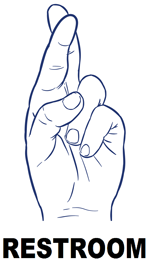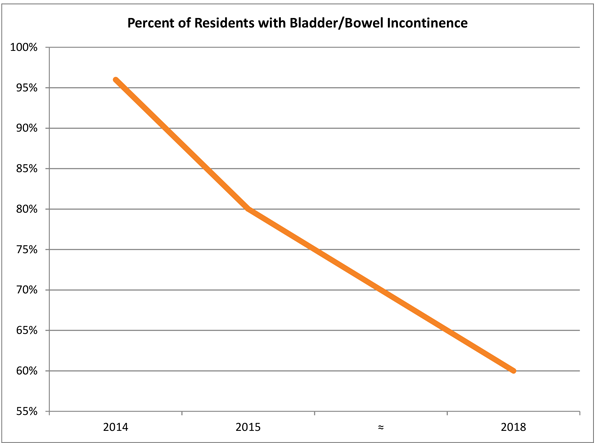How Sign Language helped reduce embarrassment and incontinence issues
In nursing homes, quality improvement initiatives are typically driven by the needs of the resident population when it comes to choosing a focus for their efforts. For Kenedy Health and Rehabilitation in Kenedy, Texas, most of its all-male population were struggling with toileting in May 2014.
Improving Resident Incontinence
During the first quarter of 2015, Kenedy began working with the TMF Quality Innovation Network Quality Improvement Organization (QIN-QIO) to improve overall composite scores with particular focus on bowel and bladder incontinence for low-risk long-stay residents, an issue that raised concern for Kenedy leadership.
“After reviewing residents who triggered on the quality measure report, we noted that our facility was at 96% on this measure,” said Priscilla Sanchez, RN, director of nursing. “The TMF QIN-QIO helped us do a root cause analysis (RCA) to identify any underlying issues. We discovered multiple reasons for incontinence in our residents and many were due to embarrassment.”
This hesitance to ask for assistance led to an increase in the percentage of long-term residents with bowel and bladder incontinence. At the time, Kenedy had several toileting programs in place, including CATCH, but these were not enough to solve the problem.
An Innovative Solution
 After completing the RCA, the Kenedy team worked with TMF QIN-QIO staff to implement a Plan, Do, Study, Act cycle, which tests interventions to mitigate the problem. During this process, a restorative aide on the quality improvement team had an innovative, person-centered idea for residents to use sign language to communicate with staff, instead of having to verbally express their needs.
After completing the RCA, the Kenedy team worked with TMF QIN-QIO staff to implement a Plan, Do, Study, Act cycle, which tests interventions to mitigate the problem. During this process, a restorative aide on the quality improvement team had an innovative, person-centered idea for residents to use sign language to communicate with staff, instead of having to verbally express their needs.
After researching the sign for “restroom,” the aide presented the idea of using sign language to one resident. Initially, he was unable to remember how to do it. However, after the aide posted a sign (shown here) with the hand symbol on the restroom door, the resident was able to sign for help with toileting. Staff then successfully repeated the process with other residents and realized they had a tool that would improve quality of care and preserve dignity.
Improved Data and Resident Dignity
Within one year after adding sign language, Kenedy staff saw a 16% decrease in the number of low-risk long-stay residents with bowel and bladder incontinence. And by November 2018, Kenedy had achieved a 36% decrease, all because they changed how residents communicate with staff.
 Kenedy now has signs posted on all restrooms throughout the nursing home. Given the success of the project, Sanchez said leadership plans to continue using sign language as a method of communication and has included education in their new employee orientation process.
Kenedy now has signs posted on all restrooms throughout the nursing home. Given the success of the project, Sanchez said leadership plans to continue using sign language as a method of communication and has included education in their new employee orientation process.